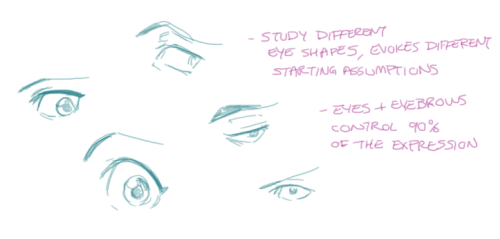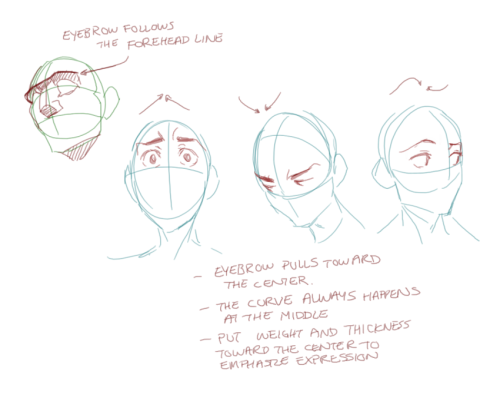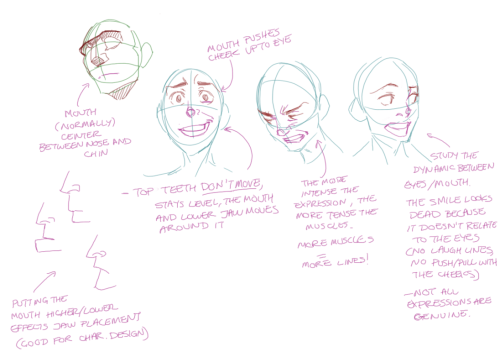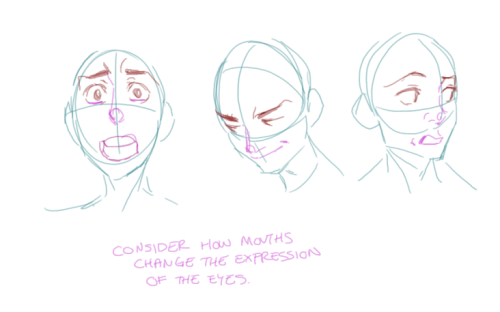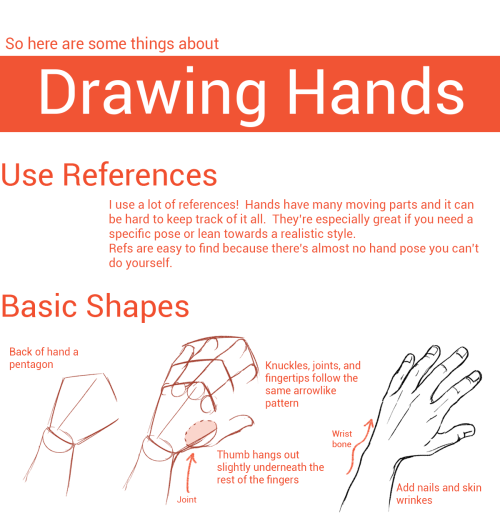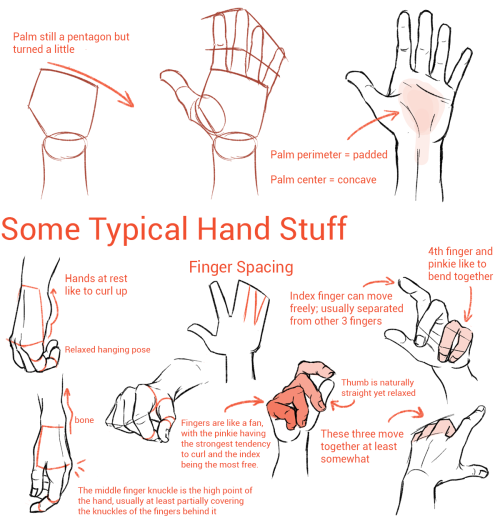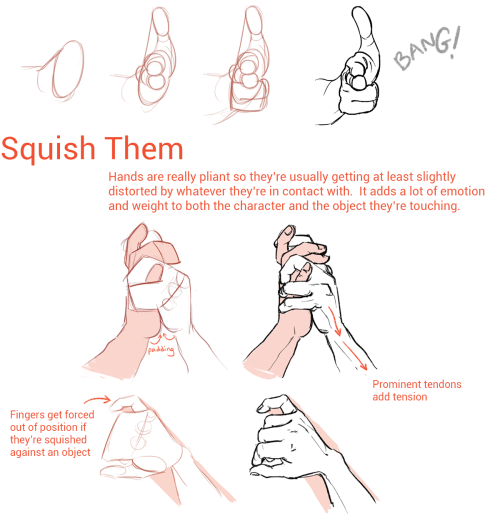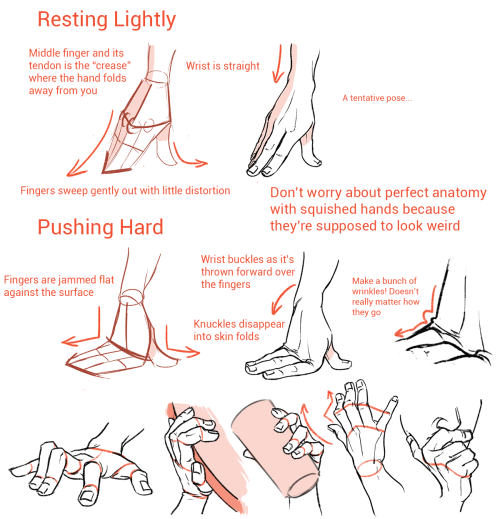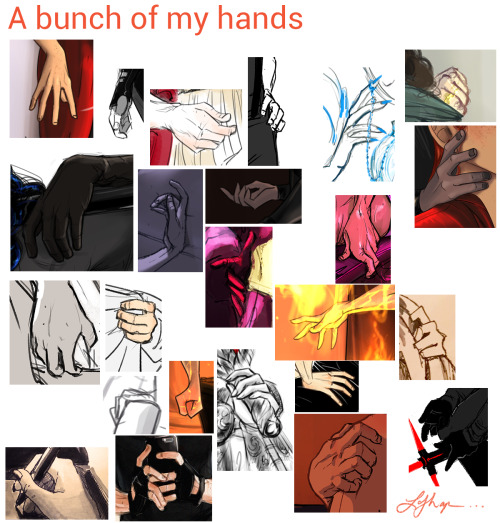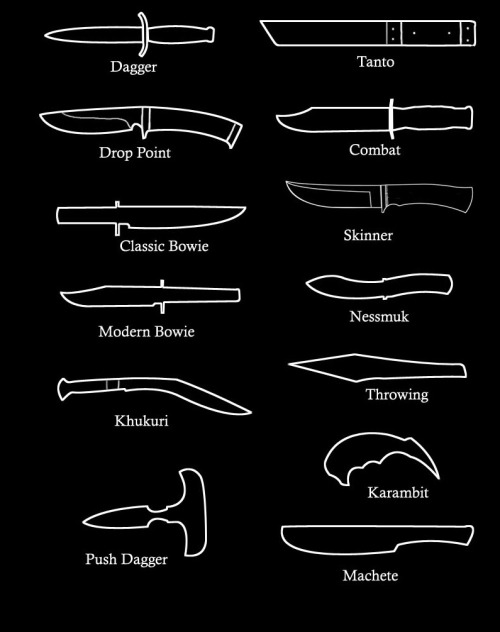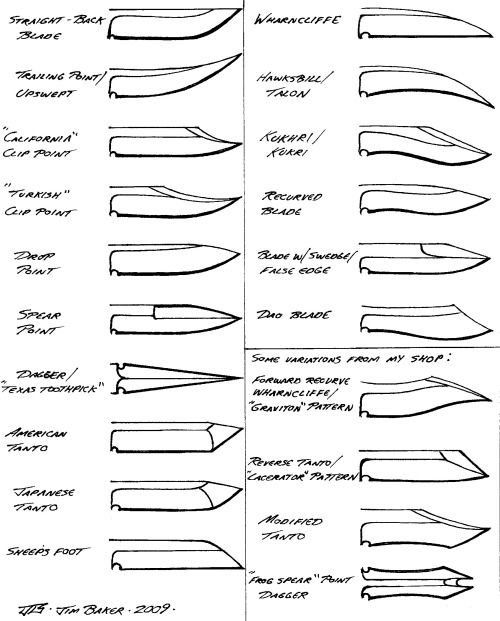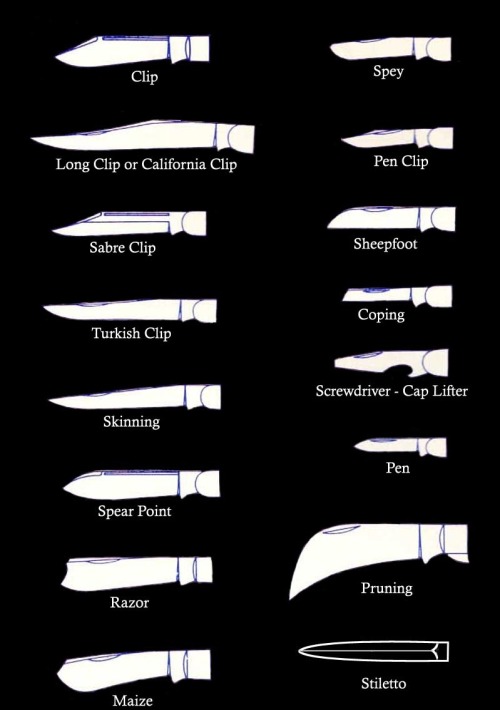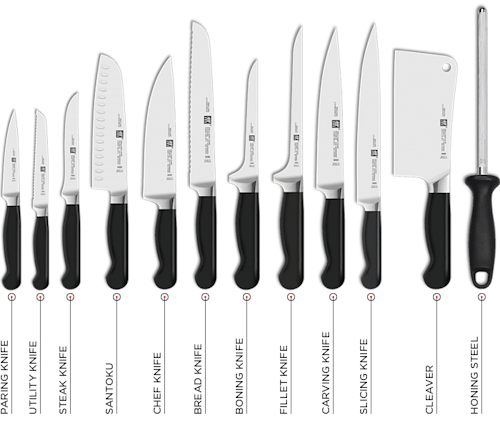And This Is How I Nose.



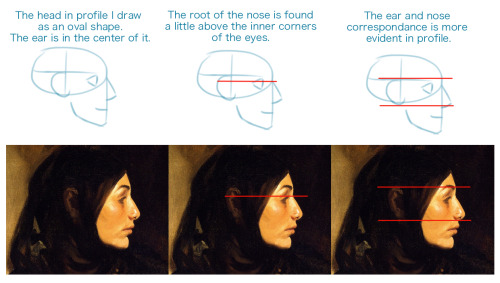
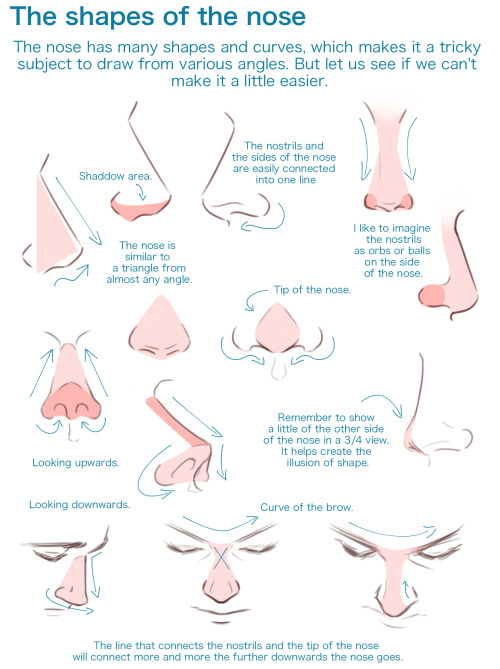
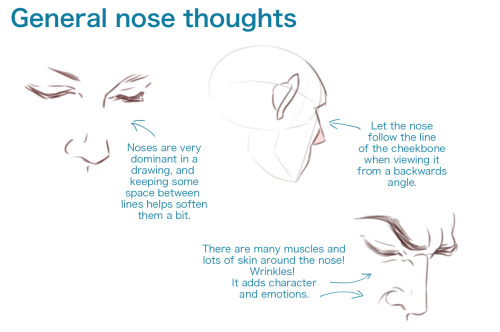
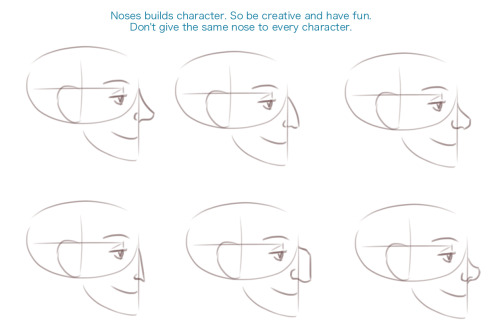
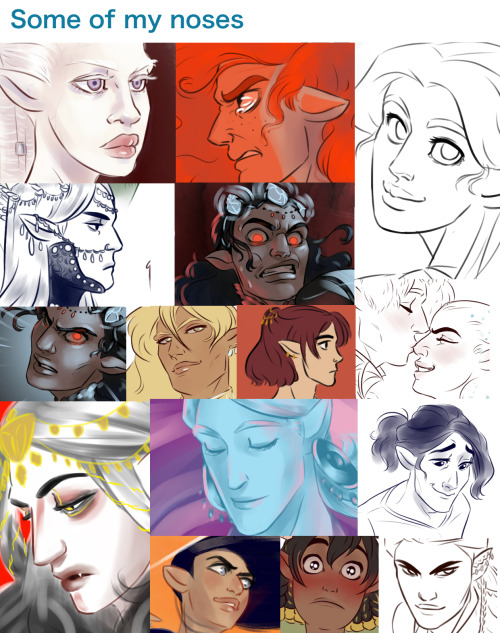
And this is how I nose.
More Posts from Arttuti and Others
Hi Fer! I simply love your blog and tutorials so much, but I was wondering on how you draw masculine bodies? My drawings have been female and slender men, and when I try... it just doesn't look right. So any tips can be really helpful because I want to try and draw different body shapes. Thank you so much! <3
easiest thing is probably to widen the shoulders and up the muscle mass! it really helps to study anatomy so you know which areas to exaggerate. a more muscular/masculine person will have a more defined sternocleidomastoid (in blue) and bigger traps (green); basically a thicker neck. playing with the shoulder to hip ratio will help as well. i guess if you want a super manly man just make him look like a dorito


Stumbled across your art recently, and I totally admire your work! As a complete noob to the digital art scene, I'd just like to ask whether you have any tips on colour picking (like for skin tones, under varied/dramatic lighting and such!). I have a ton of other things I want to ask, but I'll limit myself to one question and then try to google the rest, haha/ Thanks for sharing your art with us! ^^
ahh thank you so much! ♥ welcome to the digial art scene friend, i hope you enjoy your stay and ctrl + z
now onto your question! (if you don’t know what layer and layer modes are and how they generally work you should probably google that before you continue reading)
we all perceive colour differently (thx science) and i trust my intuition a lot when it comes to colour picking because of that, and also because i feel like you can make pretty much every colour combination work within the right context. context is key! but still, remember that all of this is about how i perceive colour, so you might not agree with everything i say.

here’s a quick rundown of terms you’ll see around a lot in reference to colours and shading: the hue, which is the ‘colour’ itself, the saturation aka the intensity, and the brightness [or value] which describes how dark or bright we perceive a colour to be.
rule of thumb: when you shade don’t just add black (or white) to your base colours, that will make your drawings boring and lifeless. use different hues and saturation!
now first things first: which skin colour does the character have?

you’ll mostly be navigating in the red to yellow spectrum for the skin tone. so when i pick the base colours i usually start with the skin and adjust the rest of the colours accordingly. if you’re not sure where to begin it might help if you first determine the values (brightness) of the base colours in grayscale.
and here are a few colour variations—i stuck to the approximate values but played around with a lot of different hues and levels of saturation.
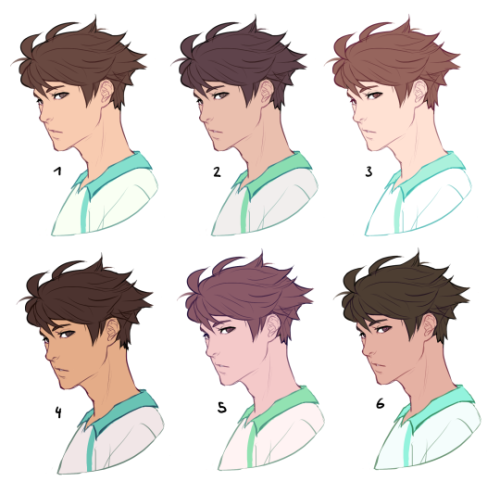
now compare 3 and 5: you’ll notice that 3 is very bright and leans towards orange hues, whereas 5 has a pinkish tint.

on the left i gave 5 the hair colour of 3 and in my opinion the pink hue of the skin doesn’t go well with the orange undertone of the hair. you’ll have to experiment a lot to find out which combinations work for you.
ctrl + u is your biggest friend (or image >> adjustments >> hue/saturation in photoshop, the shortcut works in sai and clip studio paint too). play with the sliders and see what happens. i do that a lot myself, because it’s easier to coordinate the colours like that afterwards instead of trying to manually pick perfectly matching ones right away.
for further adjustments i like to use an extra semi-transparent layer on top of everything with just a single colour to add atmospheric light. this unifies the colours and makes them more harmonious, if that’s what you’re looking for. this is about as far as i’d go if i didn’t want to shade the drawing.

if i do want to shade, especially with high contrasts and dramatic light, i darken the base by just adding an additional black layer, here set to 40% opacity. of course you could add a colour layer like the ones i mentioned previously too.


to create an impression of dramatic light you need a high contrast between light and dark areas (1). if i want additional visual intrest i often add secondary light which falls onto the main shadow areas. here i picked a faint greenish blue to balance out the yellow (2). and since light is at least partially reflected when it hits a surface you should add a faint glow that goes across the shadow/light border. i uses a mid-brown with a very soft brush on a layer set to overlay here (3).
for this shading style i like to use the layer mode colour dodge with lowered opacity + fill settings. for some layer modes opacity and fill do the exact same thing (e.g. for multiply or screen). however for colour dodge there’s a big difference:

a lowered opacity merely alters the transparency of the entire layer. that looks pretty awful sometimes, because the bright orange affects the dark of the hair much more intensely than the already brighter skin. but when you lower the fill percentage you primarily lower the amount of light that falls onto darker colours. so the layer’s opacity setting treats every colour equally whereas the fill setting takes their values into consideration. it might be hard to understand if you don’t try it out yourself, so just play around to get a feel for how it works!
and to summarise, here’s a process gif:

colour is an extremely big topic and i’ve only barely scratched the surface but i hope that still helped you out a little! the fastest way to learn is always to try things yourself, so grab a sketch and experiment. 👍
hi! umm pls pls PLS if you have the time, do a thingy on arms when you get the chance, they are so hard i could almost cry aslkdjaskjsas, i keep forgetting how many curves an arm should have/how long it should be (in diff positions/when it's not resting at the hips) etc etc etc ahhh omg please!! thank you sosososo much, i l♡ve all of your art and i hope you have a nice day!! ✧ ㅠㅠ ✧






I don’t want to go into detail in terms of muscles, but I’m sure you can find them if you google arm muscles! Hope this helps u out a little!
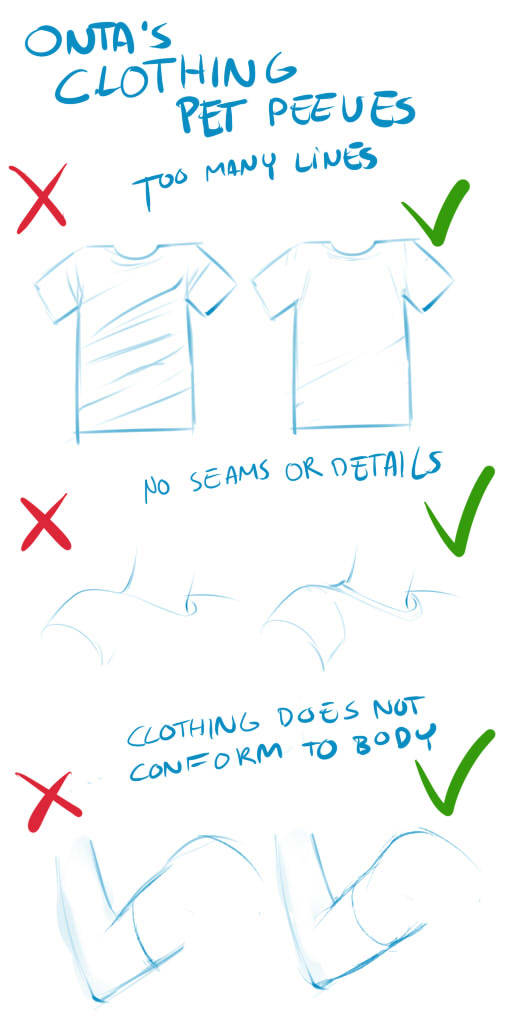
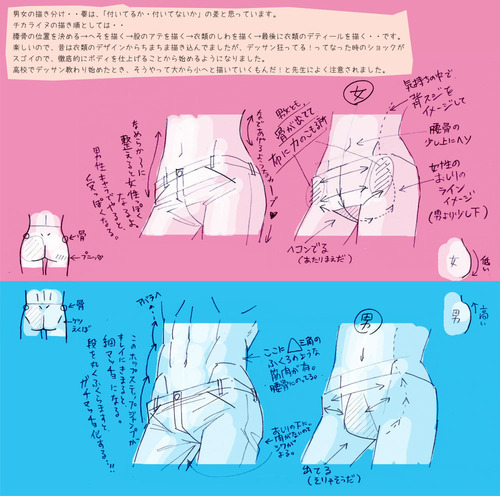
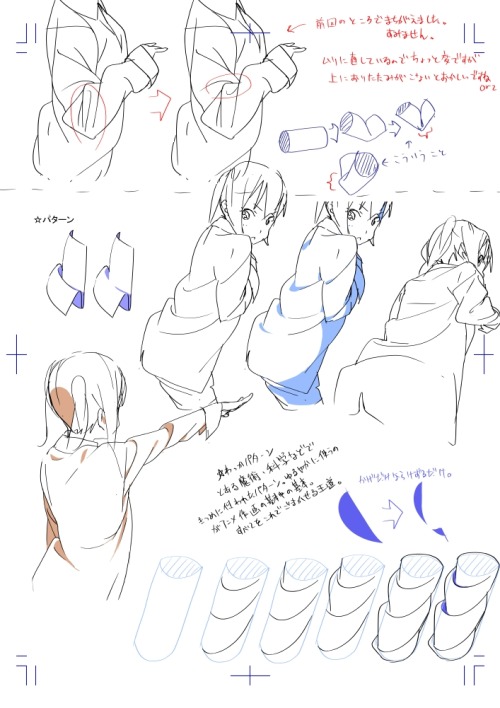
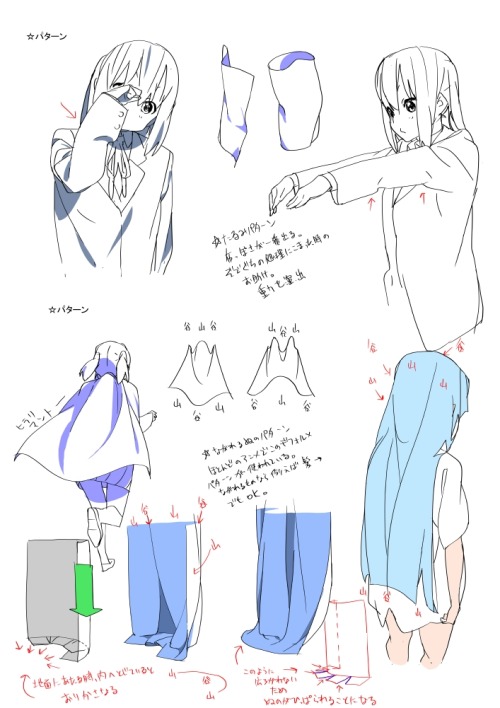
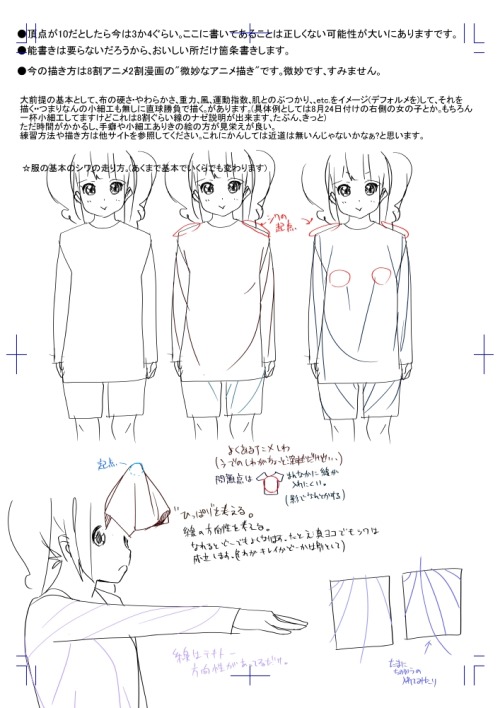
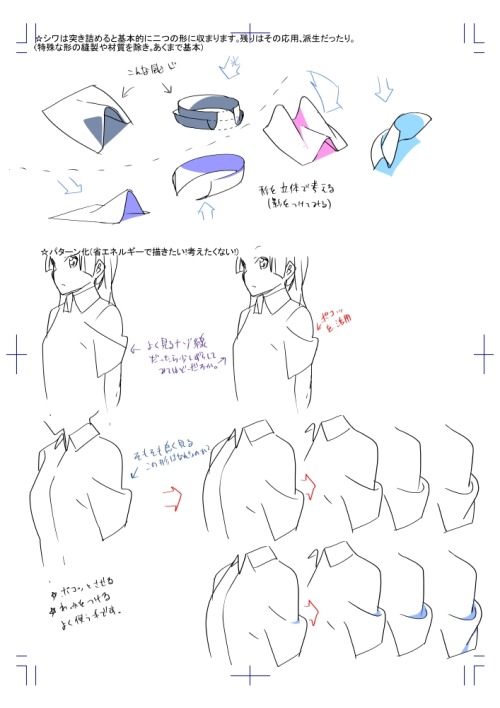
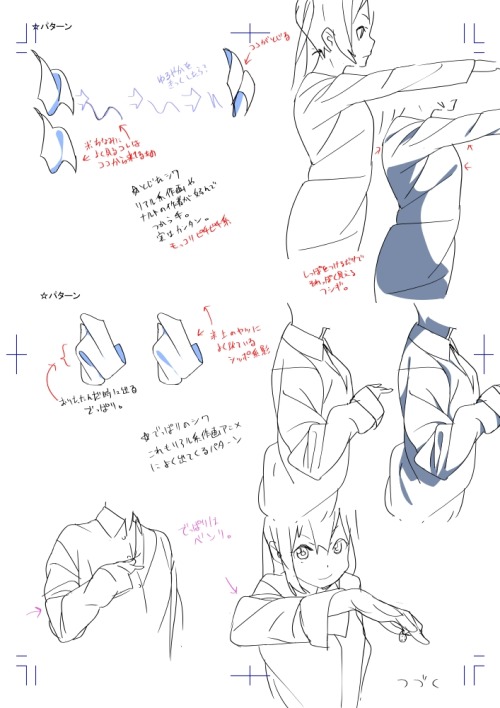
Clothing Tutorials,Tips and Guides
In order to make interesting designs of clothing, look around the web about outfit design, keep your mind with fresh ideas so then you can draw nice outfits on your characters.
Remember to keep in mind color theory when designing an outfit too, keep it balanced unless you are aiming for a sparkledog, then go nuts with the colors.
wow, I've just discovered your art and just have to say - where has it been all my life? It's perfect and you imbue so much personality into your figures. I wondered whether you have any tips or tutorials on how you draw eyes as they always vex me. I can never get them right :/ thank you!!
Thanks very much!! Eyes are pretty much just spheres sitting in sockets with 2 strips of skin draped on it. I can’t draw a circle to save my life but I hope this helps lol

-
 cholenn liked this · 2 weeks ago
cholenn liked this · 2 weeks ago -
 iwillnotfear liked this · 2 weeks ago
iwillnotfear liked this · 2 weeks ago -
 fetadae liked this · 2 weeks ago
fetadae liked this · 2 weeks ago -
 raiscoty liked this · 2 weeks ago
raiscoty liked this · 2 weeks ago -
 n0humano liked this · 2 weeks ago
n0humano liked this · 2 weeks ago -
 707shappiness reblogged this · 1 month ago
707shappiness reblogged this · 1 month ago -
 nezjazz reblogged this · 1 month ago
nezjazz reblogged this · 1 month ago -
 itsmeswaggyg liked this · 2 months ago
itsmeswaggyg liked this · 2 months ago -
 morigan84 liked this · 2 months ago
morigan84 liked this · 2 months ago -
 the-awesomeness-of-randomness liked this · 2 months ago
the-awesomeness-of-randomness liked this · 2 months ago -
 jackstarhelpandref reblogged this · 2 months ago
jackstarhelpandref reblogged this · 2 months ago -
 jackstarpopcorn liked this · 2 months ago
jackstarpopcorn liked this · 2 months ago -
 sidiouspilled liked this · 3 months ago
sidiouspilled liked this · 3 months ago -
 arliganzey reblogged this · 3 months ago
arliganzey reblogged this · 3 months ago -
 snoms reblogged this · 4 months ago
snoms reblogged this · 4 months ago -
 ellsterthinks reblogged this · 4 months ago
ellsterthinks reblogged this · 4 months ago -
 aprxls reblogged this · 5 months ago
aprxls reblogged this · 5 months ago -
 omgduhuniverse liked this · 5 months ago
omgduhuniverse liked this · 5 months ago -
 casablahca liked this · 5 months ago
casablahca liked this · 5 months ago -
 crankyship liked this · 5 months ago
crankyship liked this · 5 months ago -
 wyverntooths liked this · 6 months ago
wyverntooths liked this · 6 months ago -
 theconfusedtoaster liked this · 6 months ago
theconfusedtoaster liked this · 6 months ago -
 fittlworth liked this · 6 months ago
fittlworth liked this · 6 months ago -
 wingsforthewicked reblogged this · 6 months ago
wingsforthewicked reblogged this · 6 months ago -
 chaoit reblogged this · 6 months ago
chaoit reblogged this · 6 months ago -
 sashatheejade liked this · 7 months ago
sashatheejade liked this · 7 months ago -
 dragonidpyrus12 liked this · 7 months ago
dragonidpyrus12 liked this · 7 months ago -
 lolita7d liked this · 7 months ago
lolita7d liked this · 7 months ago -
 artking-4 reblogged this · 8 months ago
artking-4 reblogged this · 8 months ago -
 mindwenthashtagwanderlust liked this · 8 months ago
mindwenthashtagwanderlust liked this · 8 months ago -
 jyunpandorana reblogged this · 8 months ago
jyunpandorana reblogged this · 8 months ago -
 ami-kaaa reblogged this · 8 months ago
ami-kaaa reblogged this · 8 months ago -
 ami-kaaa reblogged this · 8 months ago
ami-kaaa reblogged this · 8 months ago -
 curiokit liked this · 9 months ago
curiokit liked this · 9 months ago -
 plastic-pipes liked this · 9 months ago
plastic-pipes liked this · 9 months ago -
 zubneogeist liked this · 9 months ago
zubneogeist liked this · 9 months ago -
 multidimensionalfang1rl liked this · 9 months ago
multidimensionalfang1rl liked this · 9 months ago -
 berriuccino liked this · 10 months ago
berriuccino liked this · 10 months ago -
 torts-turf liked this · 10 months ago
torts-turf liked this · 10 months ago -
 cl-chlorure liked this · 10 months ago
cl-chlorure liked this · 10 months ago -
 study-in--scarlett liked this · 10 months ago
study-in--scarlett liked this · 10 months ago -
 cynicalraccoon reblogged this · 10 months ago
cynicalraccoon reblogged this · 10 months ago -
 mizupanda liked this · 10 months ago
mizupanda liked this · 10 months ago -
 diamondblueuniverse liked this · 11 months ago
diamondblueuniverse liked this · 11 months ago -
 artking-4 reblogged this · 11 months ago
artking-4 reblogged this · 11 months ago -
 cherielovve liked this · 1 year ago
cherielovve liked this · 1 year ago -
 didakart reblogged this · 1 year ago
didakart reblogged this · 1 year ago -
 the-reader2--0 reblogged this · 1 year ago
the-reader2--0 reblogged this · 1 year ago
